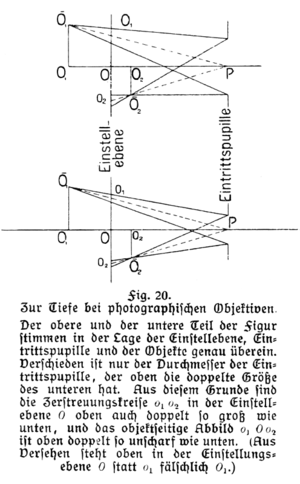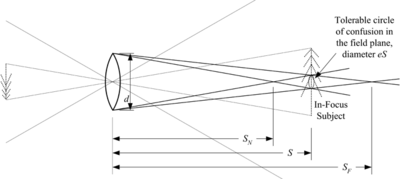
Moritz von Rohr
Encyclopedia

Jena
Jena is a university city in central Germany on the river Saale. It has a population of approx. 103,000 and is the second largest city in the federal state of Thuringia, after Erfurt.-History:Jena was first mentioned in an 1182 document...
.
A street in Jena is named after him: Moritz-von-Rohr-Straße, near Carl-Zeiss-Promenade and Otto-Schott-Straße, reminders of the proud optical heritage of the city.
Life
Moritz von Rohr was born in Łążyn near Inowrocław, PolandPoland
Poland , officially the Republic of Poland , is a country in Central Europe bordered by Germany to the west; the Czech Republic and Slovakia to the south; Ukraine, Belarus and Lithuania to the east; and the Baltic Sea and Kaliningrad Oblast, a Russian exclave, to the north...
. He obtained a Ph.D. at the University of Berlin in 1892.
Inventions
M. von Rohr is usually credited with the design of the first aspheric lensAspheric lens
An aspheric lens or asphere is a lens whose surface profiles are not portions of a sphere or cylinder. In photography, a lens assembly that includes an aspheric element is often called an aspherical lens....
es for eyeglasses. He invented the eyeglass lens designs that became the Zeiss Punktal lenses.
He also developed a method of computing depth of field
Depth of field
In optics, particularly as it relates to film and photography, depth of field is the distance between the nearest and farthest objects in a scene that appear acceptably sharp in an image...
from a camera's entrance pupil
Entrance pupil
In an optical system, the entrance pupil is the optical image of the physical aperture stop, as 'seen' through the front of the lens system. The corresponding image of the aperture as seen through the back of the lens system is called the exit pupil...
location and diameter, without reference to focal length
Focal length
The focal length of an optical system is a measure of how strongly the system converges or diverges light. For an optical system in air, it is the distance over which initially collimated rays are brought to a focus...
and f-number
F-number
In optics, the f-number of an optical system expresses the diameter of the entrance pupil in terms of the focal length of the lens; in simpler terms, the f-number is the focal length divided by the "effective" aperture diameter...
(see his 1904 and 1906 books). He says, "At this point it will be sufficient to note that all these formulae involve quantities relating exclusively to the entrance-pupil and its position with respect to the object-point, whereas the focal length of the transforming system does not enter into them." T. R. Dallmeyer refers to "von Rohr’s interpretation" of depth of field in his 1899 book Telephotography.

Publications
According to the Focal Encyclopedia of Photography (1965), "A bibliography of his 571 books and articles was published in Forschungen zur Geschichte der Optik, 1943."M. von Rohr authored several books on optics, optical instruments, and photographic lenses, in German.
- 1899 Theorie und Geschichte Des Photographischen Objecktivs, Berlin: Verl. von Julius Springer
- 1904 (editor) Die Bilderzeugung in optischen Instrumenten vom Standpunkte der geometrischen Optik, Berlin: J. Springer
- 1906, 1911 Die optischen Instrumente, Leipzig: B. G. Teubner
- 1920 Die binokularen Instrumente, Berlin: J. Springer
The 1899 book was reprinted: Sources of Modern Photography series, New York: Arno Press, 1979.
The 1904 book was translated into English:
- 1920 Geometrical Investigation of the Formation of Images in Optical Instruments, London: H. M. Stationery Office
In 1936 he published a retrospective "The First Jena Catalogue of Optical Glasses Published in 1886" in Supplement to "Current Science", which is available online.
Photos
Photos of, and more information about, Herr Dr. Prof. von Rohr are available on the Zeiss site and the AntiqueSpectacles site.External links
- Page images: Prof. Dr. Moritz von Rohr, "The First Jena Catalogue of Optical Glasses Published in 1886", Supplement to "Current Science", Vol. 5, July 1936.

